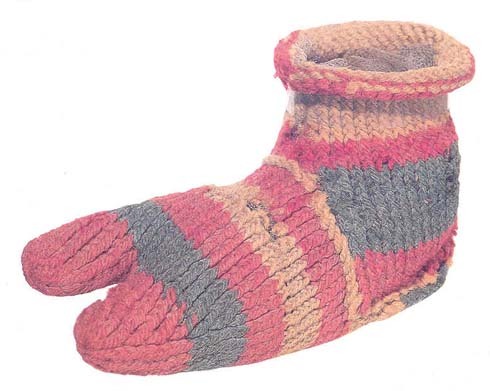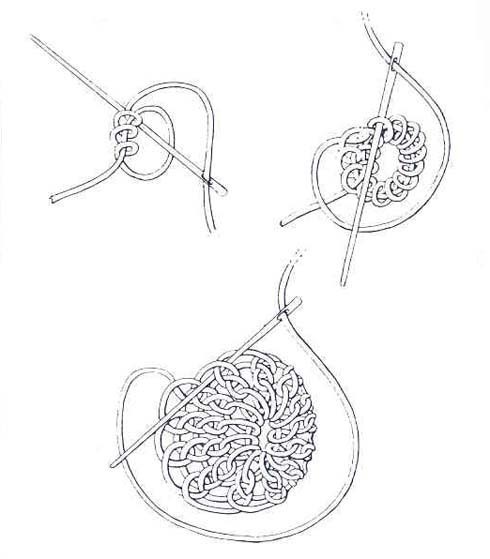Child's Sock


Annotation
Archaeologist W. M. Flinders Petrie found this child's sock, dated to the 2nd century C.E., in a cemetery at Oxyrhyncus, a Greek monastic centre on the banks of the Nile in Egypt. The sock is made of wool yarn in a technique called "sprang," or loop knitting, in which short pieces of yarn were looped in a circular pattern using a needle. The sock features a separate section for the large toe and was likely worn with a thong sandal made of woven rushes with leather strap and sole. This example is unusual both for the skill of its Egyptian maker and the elaborate multi-colored, striped pattern. It is rare for such common objects to be preserved in the archaeological record because they were subject to wear in life and disintegration after burial. Egypt's dry climate and the care taken with burials have preserved them. The technique of loop knitting was widespread in the ancient world, and has been identified in well-preserved textile examples from Peru, Denmark, and Greece. The technique sometimes involved use of a frame, and was used to make hairnets, hoods, and fishnets as well.
Credits
Manchester Museum, University of Manchester, UK. Photo by Geoff Thompson. Cited in Harris, Jennifer, ed. Textiles: 5,000 Years. London and New York: Trustees of the British Museum/Harry N. Abrams, 1993. Loop knitting diagram by Dorothy Burnham, illustration (page 16) from Information Pack on Textiles in the Petrie Museum of Egyptian Archaeology.